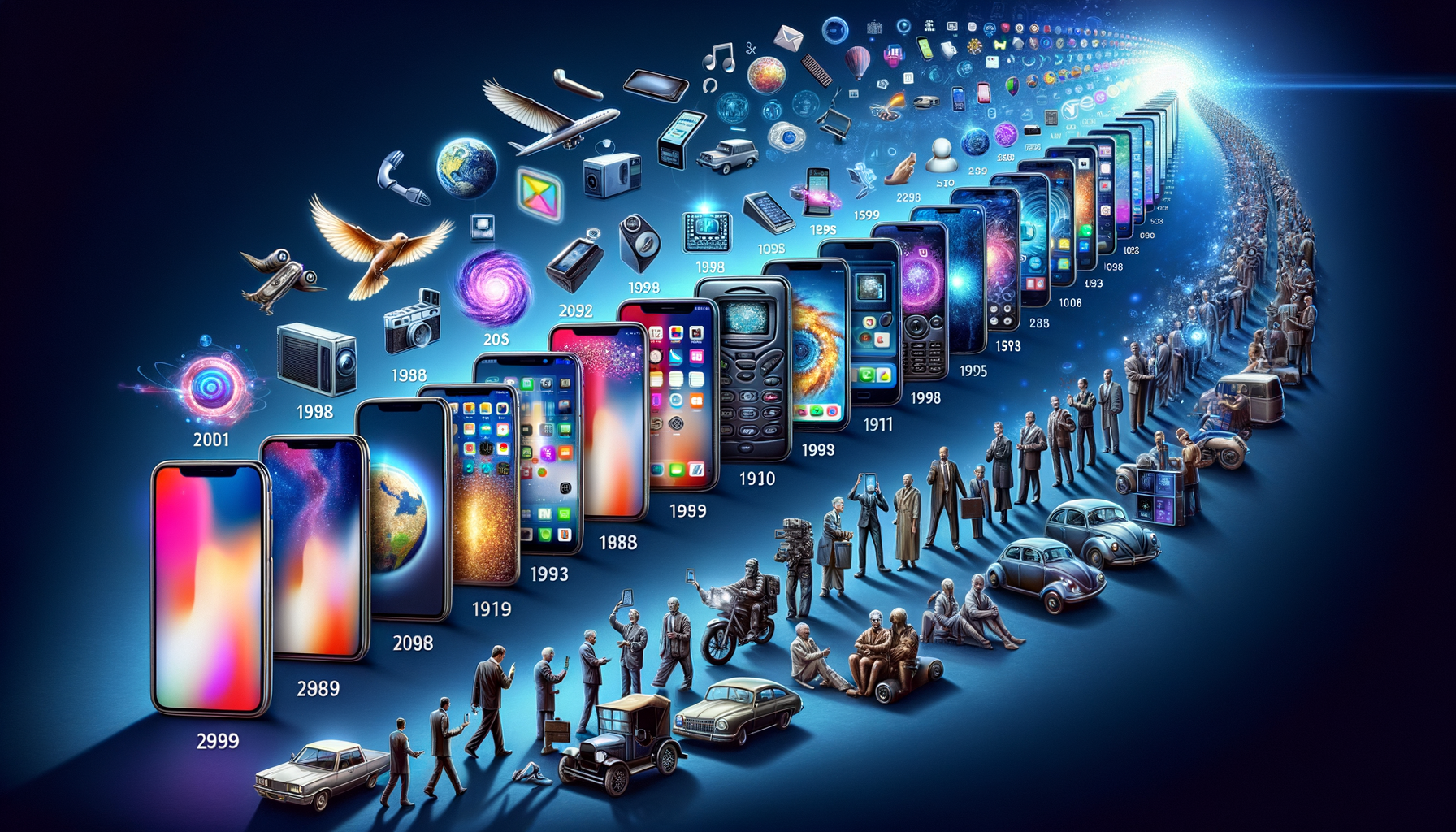
The Evolution and Impact of Smartphones: A Comprehensive Exploration
The Evolution of Smartphones
The journey of smartphones began with the convergence of computing and telecommunication technologies. Initially, mobile phones were simple devices designed for voice communication. However, the introduction of the smartphone revolutionized this concept by integrating computing capabilities with telecommunication functions. The first smartphone, launched in the early 1990s, was a pioneering step that combined the functionalities of a mobile phone and a personal digital assistant (PDA). Over the years, smartphones have evolved significantly, incorporating advanced features such as high-resolution cameras, touchscreens, and internet connectivity.
One of the most significant milestones in smartphone history was the introduction of the touchscreen interface. This innovation replaced physical keyboards with virtual ones, offering users a more intuitive and interactive experience. The evolution continued with the development of mobile operating systems, which provided a platform for developers to create a myriad of applications, further enhancing the functionality of smartphones.
Today, smartphones are equipped with powerful processors, large storage capacities, and high-speed internet connectivity, making them indispensable tools for both personal and professional use. The rapid advancement in technology has also led to the miniaturization of components, allowing manufacturers to produce sleek and lightweight devices without compromising on performance.
Smartphone Features and Capabilities
Modern smartphones are packed with a plethora of features that cater to a wide range of user needs. From high-resolution cameras to advanced biometric security systems, smartphones have become multifunctional devices that offer much more than just communication capabilities.
One of the standout features of contemporary smartphones is their camera technology. With multiple lenses and advanced image processing algorithms, smartphones can capture professional-quality photos and videos. This has led to a surge in mobile photography, with users increasingly relying on their smartphones to document their lives.
Another notable feature is the integration of artificial intelligence (AI) and machine learning. These technologies enhance user experience by providing personalized recommendations, improving battery efficiency, and enabling voice-activated assistants. Additionally, smartphones now support augmented reality (AR) applications, offering immersive experiences in gaming, education, and retail.
Other key features include:
- High-speed internet connectivity through 5G networks
- Wireless charging capabilities
- Water and dust resistance
- Advanced security features such as facial recognition and fingerprint scanning
The Impact of Smartphones on Society
The widespread adoption of smartphones has had a profound impact on society, transforming the way we communicate, work, and access information. Smartphones have bridged geographical distances, enabling instant communication through calls, texts, and video chats. This has not only strengthened personal relationships but also facilitated global business operations.
In the workplace, smartphones have increased productivity by allowing employees to access emails, documents, and applications on the go. This has led to the rise of remote work and flexible working arrangements, providing employees with greater autonomy and work-life balance.
However, the prevalence of smartphones has also raised concerns about addiction and mental health. The constant connectivity and access to social media platforms can lead to excessive screen time, affecting sleep patterns and mental well-being. It is important for users to establish healthy boundaries and practice digital detox to mitigate these effects.
Choosing the Right Smartphone
With a plethora of options available in the market, choosing the right smartphone can be a daunting task. It is important for consumers to consider their specific needs and preferences when selecting a device. Key factors to consider include:
- Operating System: Whether you prefer an open-source platform or a more controlled ecosystem.
- Camera Quality: For photography enthusiasts, camera specifications and features are crucial.
- Battery Life: Essential for users who rely on their phones throughout the day.
- Storage Capacity: Depending on your need for apps, photos, and videos.
- Price: Balancing between budget constraints and desired features.
Consumers should also consider future-proofing their purchase by opting for devices that support the latest technologies, such as 5G connectivity and AI capabilities. Reading reviews and comparing specifications can provide valuable insights into the performance and reliability of different models.
The Future of Smartphones
The future of smartphones is poised to be exciting, with emerging technologies promising to redefine the capabilities of these devices. Foldable screens, for instance, are gaining traction, offering users the flexibility of a larger display in a compact form factor. This innovation could revolutionize the way we interact with our devices, providing a seamless transition between phone and tablet modes.
Another promising development is the integration of more advanced AI and machine learning algorithms. These technologies will enable smartphones to become even smarter, anticipating user needs and automating routine tasks. Additionally, the continued expansion of 5G networks will facilitate faster data transfer and improved connectivity, unlocking new possibilities for mobile applications.
Environmental sustainability is also becoming a priority for smartphone manufacturers. Efforts are being made to develop eco-friendly materials and promote recycling programs to reduce the environmental impact of smartphone production and disposal.
As we look ahead, it is clear that smartphones will continue to play a pivotal role in our lives, adapting to meet the evolving needs of users and shaping the future of communication and technology.